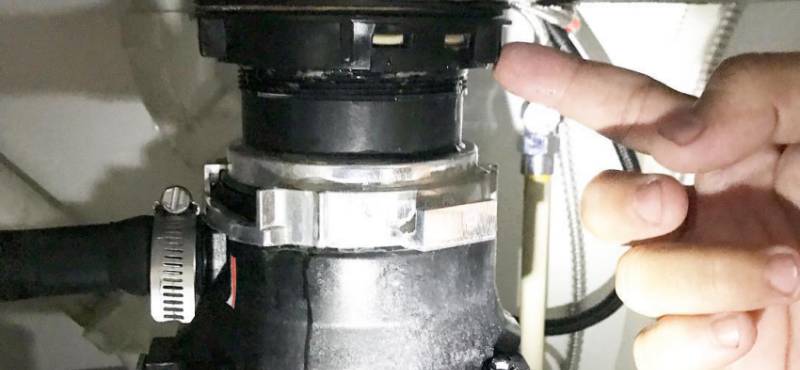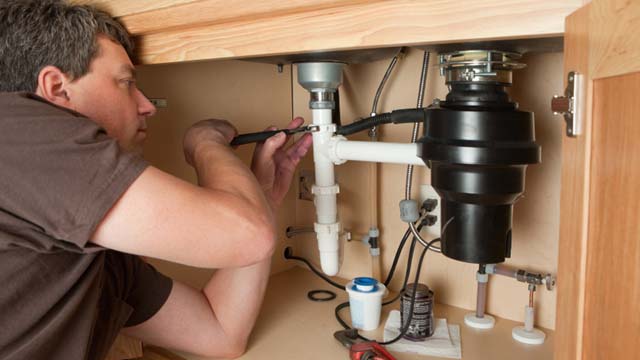Confirmed Ways to Fix a Leaking Waste Disposal Unit
Confirmed Ways to Fix a Leaking Waste Disposal Unit
Blog Article
They are making a few great pointers on the subject of Tips on Fixing a Leaking Garbage Disposal overall in this great article down the page.

Waste disposal unit are necessary kitchen area appliances that aid in throwing away food waste effectively. Nonetheless, a dripping garbage disposal can be an irritating and messy problem to take care of. The good news is, several leakages can be taken care of quickly with a few straightforward actions. In this short article, we will talk about exactly how to deal with a leaking waste disposal unit properly.
Intro
Garbage disposals are mounted under kitchen area sinks and are designed to shred food waste into smaller sized pieces, allowing it to go through the pipes system quickly. While these tools are normally reliable, leakages can happen in time due to damage, loose links, or damages to the unit.
Typical Sources Of Leaks in Trash Disposals
Worn Seals and Gaskets
Seals and gaskets play a crucial function in stopping water from dripping out of the waste disposal unit. In time, these elements can degrade, causing leaks around the disposal unit.
Loose Links
The links between the garbage disposal and the plumbing system can end up being loose with time, triggering water to leak out throughout operation.
Cracks or Openings in the Disposal System
Physical damage to the waste disposal unit, such as fractures or holes in the real estate, can likewise result in leaks.
Identifying the Resource of the Leak
Before trying to fix a leaking waste disposal unit, it is necessary to determine the resource of the leakage. This can commonly be done through aesthetic examination or by conducting straightforward tests.
Visual Examination
Evaluate the waste disposal unit system meticulously for any type of indicators of water leak. Pay very close attention to areas around seals, gaskets, and link factors.
Evaluating for Leaks
One method to evaluate for leaks is by running water through the disposal device and looking for any type of visible signs of leak.
Tools and Materials Needed for Fixing a Dripping Garbage Disposal
Prior to starting the repair work process, collect the required devices and materials, consisting of a screwdriver, adjustable wrench, plumber's putty, substitute seals or gaskets, and epoxy or patching product for repairing splits or holes.
Step-by-Step Guide to Dealing With a Leaking Garbage Disposal
Turn Off the Power
Before trying any kind of repairs, make sure that the power to the waste disposal unit device is turned off to stop the danger of electrical shock.
Locate the Leakage
Recognize the specific area of the leak and identify the reason.
Tighten up Links
Make use of a wrench to tighten any type of loose connections in between the disposal unit and the pipes system.
Change Seals or Gaskets
If the leakage results from used seals or gaskets, eliminate the old components and replace them with new ones.
Patching Splits or Openings
For cracks or openings in the disposal system, use epoxy or an ideal patching material to secure the damaged location.
Checking the Garbage Disposal After Repair
When the repair is total, test the waste disposal unit by running water via it to guarantee that the leakage has been solved.
Preventive Maintenance Tips to Avoid Future Leakages
To stop future leaks, it is necessary to do normal maintenance on your garbage disposal. This includes keeping it clean, preventing placing non-food things or tough things down the disposal, and occasionally looking for leakages or various other problems.
Conclusion
In conclusion, dealing with a leaking garbage disposal is a fairly simple process that can be finished with basic devices and materials. By following the steps laid out in this short article and practicing preventive maintenance, you can maintain your garbage disposal in good working condition and prevent costly fixings in the future.
HERE’S HOW TO FIX YOUR GARBAGE DISPOSAL
WHAT TO DO IF SOMETHING IS STUCK IN YOUR GARBAGE DISPOSAL
If the impeller won’t turn, there’s probably something stuck in the disposal. It could be a steak bone or peach pit, although plumbers report pulling all sorts of inappropriate objects out of disposals, such as bottle caps or aluminum foil. Make sure power to the disposal is off, and look inside to see if you can see the source of the jam.
Never stick your fingers in a disposal. Pull out anything you see with tongs or pliers.
If the disposal still won’t work, it may be time to call a plumber or consider buying a new disposal. GEM Plumbing & Heating is here for all of your garbage disposal needs.
WHAT TO DO IF YOUR GARBAGE DISPOSAL DRAIN IS CLOGGED
Take everything out from underneath your sink and put a bucket or other container under your disposal to catch any water that drains out. Disconnect your disposal from the power supply. If it’s plugged into a wall outlet, unplug it. If it’s hardwired into an electrical box, go to the electrical panel and turn off the breaker for the disposal. Pour ¼ cup of baking soda into the drain, followed by ½ cup of white vinegar. Give the solution a few minutes to fizz and do its work. Look into the disposal with a flashlight to see if you can see an object that might be causing the clog. If you see it, remove it using tongs or pliers. MORE TIPS ON DEALING WITH A CLOGGED GARBAGE DISPOSAL
Never use drain cleaner in a garbage disposal. It can damage the plastic parts inside the disposal. You can also be splashed with the caustic liquid while working to clear the clog. Beware! Never stick your fingers into a garbage disposal. Trust us — not a good idea. In many instances, your dishwasher drains through your garbage disposal. This allows the disposal to grind any large food particles that may be drained out of your dishwasher. There are some jurisdictions, however, where the plumbing code prohibits such a connection. WHAT TO DO WHEN YOUR DISHWASHER DRAINS THROUGH THE DISPOSAL
Run some water in the sink so your plunger has at least a ½-inch of water to create a seal and plunge vigorously up and down several times. You may need to repeat this several times. Run hot water down the drain to clear any residue that remains.

I have been very occupied with Why Is and I really hope you appreciated the entire blog post. Enjoyed our blog entry? Please share it. Let another person discover it. Thanks a lot for your time spent reading it.
Get A Quote Report this page